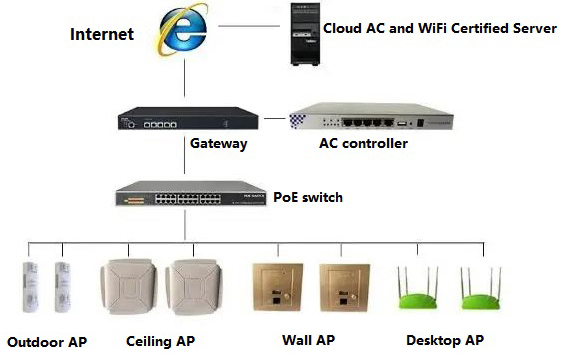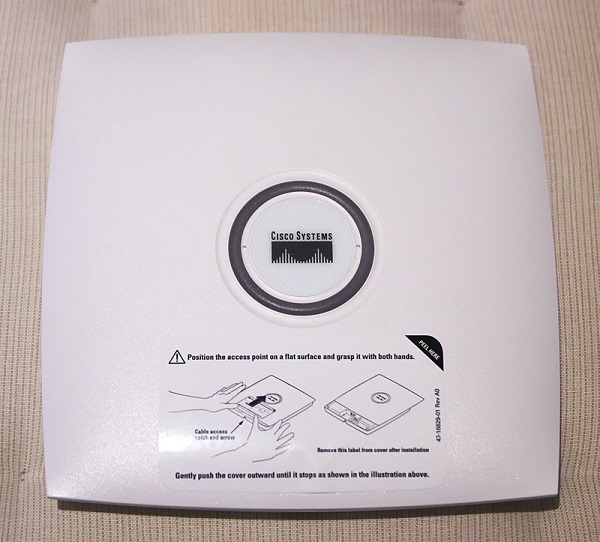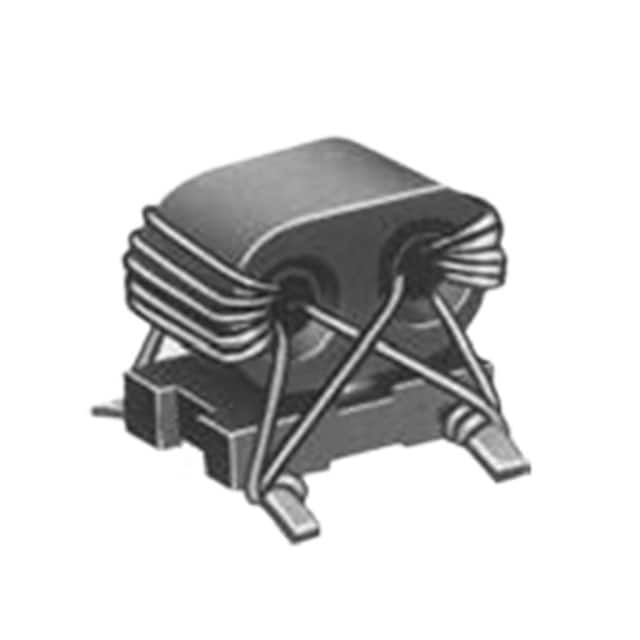Ⅰ. Wireless Access Point
Ⅱ. How to select the AP installation location when planning the wireless access point.
Ⅲ. How to select AP frequency when planning the wireless access points.
Ⅳ. What principles should be followed when planning wireless access points?
Wireless Access Point
Wireless Access Point (WAP) is a wireless switch used for wireless networks, providing the function of transmitting and receiving wireless signals, and is also the core of wireless networks.
The working principle of the wireless access point is that the network signal is transmitted through a twisted-pair cable, and after the compilation of AP products, the electrical signal is converted into a radio signal and sent out to form the wireless network coverage.

The wireless access point (WAP) or access point (AP) is an access point for mobile computer users to access the wired network, mainly used in broadband homes, inside buildings, and inside campuses, with typical distance coverage of tens to hundreds of meters.
In some big cities, it is not easy to lay lines for various reasons, such as the high cost of fiber optics, twisted pair long-distance signal weakness, river obstruction, city image, etc. We all prefer to facilitate the block shortcut to connect to the network, so the formation of a WAP unlimited network has a very obvious advantage.
In this article, I have organized the related knowledge of WAP into three major modules, I hope it can help you.
1, Large wireless coverage
For large venues, such as hotels, we can use the following networking method for wireless coverage, using PoE power supply and wireless AC. AC has the function of unified control of wireless access point, which can simplify network management and maintenance.
Plan the access layer PoE switch according to the number of APs. Please note that when choosing PoE switch, you need to know the power supply standard of PoE, and then choose the corresponding Poe switch.
PoE power supply standard:
Determine the power protocol supported by the AP (APC or IPC) (e.g. 802.3af, 802.3at or non-standard PoE). The PoE power protocol supported by the switch must be the same as the powered endpoint.
The single port output power of 802.1af standard PoE switch is 15.4W, and the single port input power of 802.3at standard PoE switch is 30W. 802.3at standard PoE switch is recommended for power-consuming devices that consume more power.
2, Small and medium-sized wireless access point network coverage
The traditional wireless access point coverage is mainly used for network coverage in some small places. It is suitable for some bookstores, small restaurants or villas, etc... It uses an AC router for AP and broadband broadcast. It works very well.
What is an AC router?
AC router is a kind of router. AC routing refers to the routing that uses the AC function. The AC controller is used for wireless coverage to centrally manage all APs. It can be called the AP "housekeeper" and its role is to manage the APs.
A router is a network device used for data communication in many companies, businesses, Internet cafes, and large networks.

3, Wireless access point coverage summary
In the process of implementing AP coverage, there are two points to note in order to ensure the stability, flexibility, coverage, and scalability of the solution.
(1) Notes on building a wireless roaming
Wireless in the roaming network, the client's configuration is the same as the configuration in the access point network. During the movement, the user does not feel the switch between wireless access points.
(2) Wireless access point setup instructions
In large wireless networks, AP wireless coverage is mainly because wireless access point has many advantages: flexible network expansion, wide-coverage, easy management, and other features.
When using a large wireless network, a large number of wireless access points are needed. When managing these large numbers of wireless access points in a unified manner, APs need to be set up.
Since the coverage areas of multiple AP signals overlap each other, the channels occupied by the AP coverage areas must conform to certain specifications, and adjacent channels cannot overlap each other.
In other words, a wireless access point in the mutual coverage area cannot be used, otherwise, the same channels will cause mutual interference among APs during signal transmission, thus reducing the efficiency of APs.
Among the 11 available channels, only 3 are covered, which are channel 1, channel 6, and channel 11, and it is appropriate to use these channels for multi-cell coverage.
In addition, the wireless access points used to implement the wireless roaming network must use the same network name (SSID) and use the same network segment IP address. Otherwise, the wireless client will not be able to achieve roaming.

How to select the AP installation location when planning the wireless access point.
If you install one AP in a single room, try to place the AP in the center of the hall, preferably on the ceiling of the hall, and if you install two APs, you can place them on two opposite corners of the hall.
How to select AP frequency when planning the wireless access points.
In theory, the isolation degree of adjacent frequency points >= 35 db. According to the empirical value, when adjacent APs set the same frequency points, the interval is more than 25 meters; when adjacent APs set adjacent frequency points, the interval is more than 16 meters; when APs set adjacent frequency points, the interval is more than 12 meters.To maintain a good quality WLAN, it is necessary to consider the number of users within the coverage area, and the number of online terminal users of a single AP should not exceed 30.
What principles should be followed when planning wireless access points?
(1) Coverage principle: Prefer to ensure that the signal coverage can meet user requirements. (2) Easy installation principle: the planning site should meet the construction requirements.
标签:wireless



